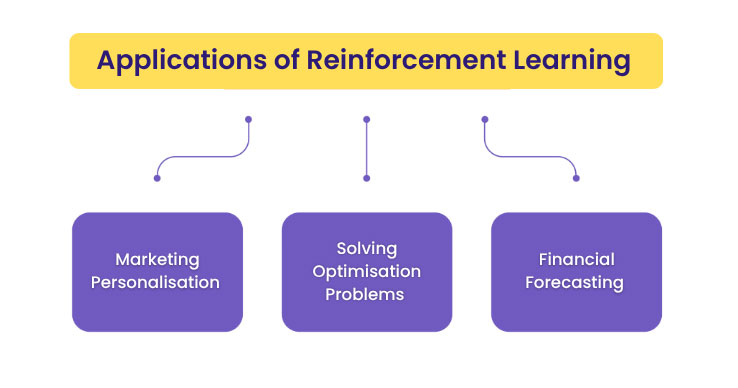Skill learning is one of the most necessary steps with regard to development in life and career these days. For students, professionals who are already in jobs, or even those who have taken a break and are restarting their career, your ability to learn new things with agility makes or breaks you. The world is moving fast, and people who learn quickly progress quickly. However, there is a major roadblock in India that often slows down this progress: language.
Most people in India have high proficiency in Hindi and can communicate fluently in it. But when it comes to English, they face tangible problems. Conversely, many professional courses, certifications, and even books and tutorials are taught only in English. This creates a learning gap that is not small but significant. The problem with this gap is that students or learners start believing that they are not intelligent enough, not competent enough, or not capable of grasping tough concepts. In reality, the issue is not intelligence or competence at all—it is simply that they did not relate well to the medium of instruction, which is the English language.
That is where the importance of bilingual training courses (Hindi + English) comes into play. These courses are explained in both Hindi and English, making it much easier for learners to understand everything clearly. As most of these courses deal with highly conceptual topics such as data science, machine learning, or business analytics, we don’t want learners to feel lost or out of place. Instead, the objective is to make them comfortable and confident.
Why is there a Learning Gap?
The learning gap in India has nothing to do with intelligence or talent. It is purely about access to the right medium of instruction. Let us explore the major reasons why this gap exists:
4 Major reasons why Learning gap in India
1. English-centric education system
English is the primary medium of higher education, technical books, and professional training in India. For example, imagine a learner who has studied in a Hindi-medium school or belongs to a small town. When this learner joins a course that is entirely in English, he or she will feel lost and disconnected. The barrier is not the subject itself but the language in which it is being taught.
2. Confidence issues
Many learners hesitate to ask questions or participate in discussions simply because their English communication skills are weak. Even if they have understood the concepts, their silence creates a wall between the learner and the teacher. Over time, this lack of interaction reduces confidence and makes them feel inferior.
3. Different pace of understanding
Every learner has their own pace of learning. Many students who are not fluent in English first try to translate the English terms into Hindi in their brains. Unfortunately, by the time they finish processing, the teacher has already moved on to the next topic. This creates a gap in understanding, and once a learner falls behind, it becomes difficult to catch up.
4. Practical exposure is missing
Almost all online tutorials and reference materials available today are in English. These resources rarely use examples based on Indian culture, Indian context, or local experiences. As a result, the learners feel no connection with the material. Over time, they lose interest because they cannot relate to the subject.
How Bilingual Training Solves the Problem?
Bilingual (Hindi + English) training is not just about word-to-word translation. It is about creating a natural learning experience where the learner feels comfortable, confident, and connected.
1. Easy understanding
When concepts are explained in English but supported with Hindi examples, the clarity is immediate. For example, in a Python course, the trainer can introduce the concept of functions in English and then explain it in Hindi with relatable examples: “Function ek kitchen recipe ki tarah hai—jab bhi tum same dish banana chahte ho, tum wahi steps repeat karte ho.” This kind of explanation strikes a chord instantly and makes even complex ideas easy to grasp.
2. Confidence building
Once learners realize that it is perfectly fine to mix Hindi and English, they start speaking up. They begin to ask questions without hesitation, share their thoughts, and clarify their doubts. This active participation takes away the fear of English and builds genuine confidence in their learning journey.
3. Bridging rural and urban learners
Bilingual courses ensure that students from smaller towns and rural areas do not feel left behind compared to those from metro cities. Both groups of learners gain access to the same skills without the feeling of being “first-class” or “second-class.” This equalizes opportunities and ensures inclusivity in education.
4. Retention of knowledge
Studies have shown that people retain knowledge longer when it is taught in their mother tongue or in a familiar language. Bilingual training ensures deep understanding, rather than superficial memorisation. This means learners are not just passing exams but actually mastering the concepts.
5. Practical examples that connect
A bilingual trainer doesn’t just translate words; they give real-life, culturally relevant examples. For instance, while teaching data analysis, instead of using foreign datasets, the trainer might explain using railway booking records, kirana shop sales, or cricket match statistics. These examples connect directly with learners, making the subject engaging and meaningful.
Who Benefits the Most from Bilingual Courses?
- Hindi-medium school students who want to upskill in tech, business, or data analytics.
- Working professionals who are skilled in their jobs but lack confidence because of English-only training.
- Career switchers looking to enter new fields like data science, IT, or digital marketing but feel restricted by English-heavy content.
- Learners from smaller cities and rural areas who aspire to gain new-age skills and compete globally.
Real Impact of Bilingual Training
Take the example of Ankit, a student who graduated from a Hindi-medium college. He was exceptionally good at mathematics, but when he joined a data science course taught only in English, he started losing track of the concepts midway and eventually dropped out.
Later, Ankit enrolled in a bilingual (Hindi + English) data science program. This time, the trainer introduced technical concepts in English but consistently explained them through Hindi examples and practical scenarios. Not only did Ankit complete the course with full confidence, but he also implemented projects successfully. Today, he works as a data analyst in a reputed company.
This is not an isolated case. Thousands of learners across India have experienced similar transformations. Bilingual training has opened doors that were previously closed due to language barriers.
The Future of Learning in India
India is a country of many languages, but Hindi is widely understood across regions. At the same time, English remains the global language of business and technology. A Hindi-English mix in education ensures:
- No learner feels excluded.
- Information spreads quickly and effectively across the country.
- Learners get access to high-paying jobs and international opportunities.
- India’s workforce becomes stronger, more skilled, and globally competitive.
Why Companies Prefer Bilingual-Trained Professionals?
Employers today value professionals who have both technical expertise and communication skills. A bilingual-trained professional develops both simultaneously:
- They can handle global clients and documentation in English.
- They can collaborate with local teams, vendors, and customers in Hindi.
- They understand concepts deeply because they learned in a bilingual environment.
- They solve problems faster and contribute more effectively to their organizations.
This unique combination of skills makes bilingual-trained professionals highly valuable in the job market.
Final Thought
Learning is never restricted to a single language; it is all about comprehension and connection. Success becomes natural when knowledge is imparted in a way that learners can truly engage with. Bilingual (Hindi + English) training acts as the bridge that connects learners’ dreams with real opportunities.
At ConsoleFlare, we strongly believe that access to high-quality education should not depend on location, language, or background. Every learner deserves equal opportunity. That is why our career training programs are carefully designed to be bilingual, hands-on, and scenario-based.
Whether you are a fresher just starting out, a professional looking to switch careers, or someone wanting to upgrade your skills, ConsoleFlare ensures that language is never an excuse to hold you back. With proper guidance in data science course, business analytics, and more, you can unlock high-paying jobs and limitless career growth.
Remember this: you learn best in a language you understand. And when you build your career with ConsoleFlare, success is not just possible—it is guaranteed.
For more such content and regular updates, follow us on Facebook, Instagram, LinkedIn





